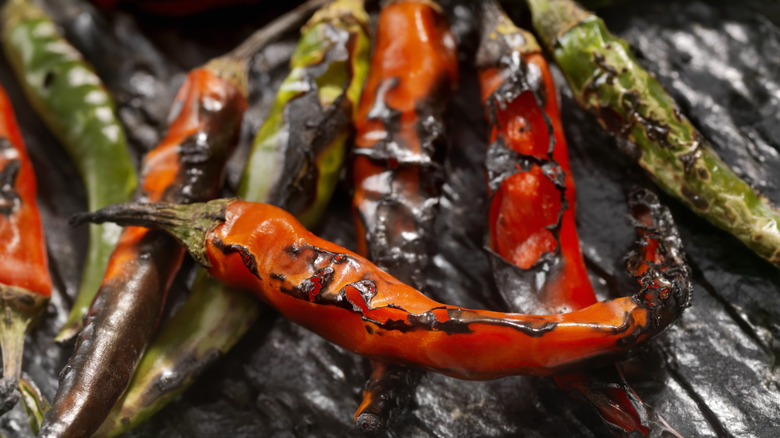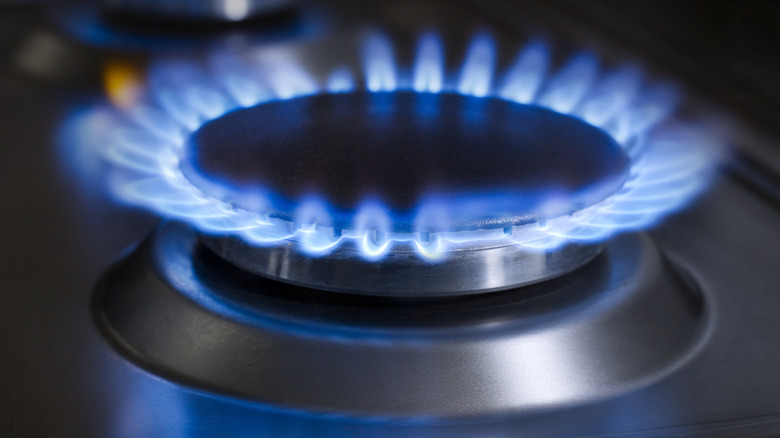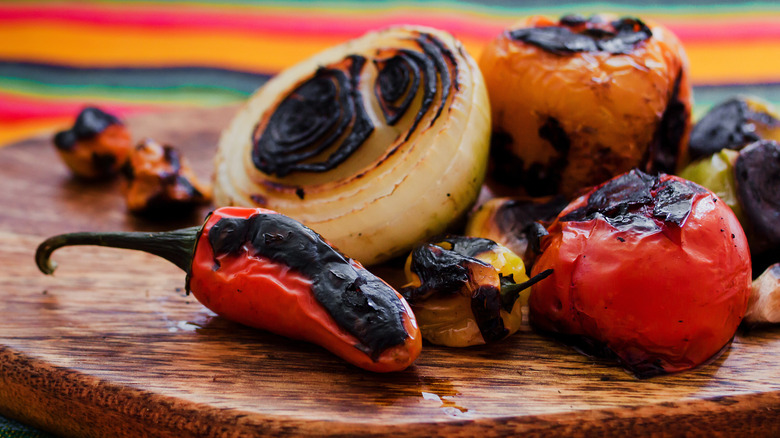Ditch Your Stovetop Grates For Better Charred Vegetables
Charred vegetables add a sophisticated bump of flavor to every dish. They're a secret weapon when cooking grilled meats and the star of the show when making dips. The best part is, home cooks can accomplish a beautiful char all year round using a gas burner's flame. The only thing standing in your way is your stovetop's grates.
After setting the metal grate aside, you can place veggies directly into the flames using metal tongs or place them on a cooling rack set close to the burner. Tongs give a greater range of control and are good fit for green onions, corn, and other produce that need a quick kiss of heat. Using a cooling rack or even a mesh fish basket allows you to step away from foods that need a longer cooking time like eggplant and onions.
Regardless of what you're making, it's suggested to turn on the ventilation fan or open windows as it's about to get smoky.
Benefits of stovetop charring
Direct heat can transform ingredients by concentrating their flavors and pushing the limits of the Maillard reaction, the chemical process that changes the aromas and flavors of food during the browning process. Bitter vegetables, in particular, benefit from charring as their flesh will mellow and sweeten.
The idea is that, while the husk, peel, or exterior of a vegetable will scorch, its interior will cook gently and the center will remain firm. The extreme technique elicits an intriguing mix of raw and fresh textures and tastes in each bite. After the stovetop treatment, expert chefs suggest removing and covering ingredients with a bowl to promote carryover cooking.
If you're not comfortable working with fire just yet, you can also use the broiler to achieve a similar smoky aroma. Make sure to line some trays with foil, leave vegetables undisturbed, and use your oven's secret feature for a better broil.
Vegetables that can take the heat
Once you get the hang of charring vegetables on the stovetop, you'll find they play an important role in cuisines around the world. On her website, Mexican chef Pati Jinich goes as far as naming it "one of the signature cooking techniques" of her home country. Her expert tip is to prick unpeeled garlic cloves before charring, as the trapped air will cause popping sounds.
As for how to use the veggies, try making a fresh salsa with roasted tomatillos and tomatoes or adding flame-kissed onions and jalapeños to pinto beans. If you're in the mood for a hearty pho, put those onions, jalapeños, and even ginger to work in a broth base for the Vietnamese soup.
Charred eggplant is a similarly cherished ingredient across the Mediterranean and Middle East and a poster child for this cooking style. After it's peeled, the nightshade's interior is creamy and smoky. The sweet taste lends itself to recipes like burned eggplant with tahini, as well as baba ganoush, soup, and even pasta.



